Kia to launch electric vehicles on modular PBV platform from 2025
In Kia’s previous publications, the abbreviation PBV was used as an acronym for “Purpose Built Vehicles,” i.e. electric vehicles specifically designed for taxi services and ride-hailing providers. The South Koreans’ new PBV platform is far more than that. It is about customised vehicles in combination with advanced software and individual services.
The “PBV platform offers users a blank canvas to redefine how space and mobility can adapt to their needs by providing exceptional flexibility through radical modularity,” the car manufacturer states. It also says that it is “determined to overcome all existing restrictive and one-dimensional industry product line-up offerings.”
Specifically, Kia wants to initially base its PBV segment on three vehicles: the PV5, the PV1 and the PV7. The manufacturer is showing studies of all three models in Las Vegas, including three variations of the Concept PV5 for goods and passenger transport. Mass production is said to kick off in 2025. With the Concept PV7 and Concept PV1, the Korean brand previews a larger and a smaller model. They will be introduced gradually and manufactured in a previously announced plant in the Kia Hwaseong factory in Gyeonggi province, South Korea. The plant has an initial annual capacity of up to 150,000 vehicles from 2025. A second plant for PBVs, which could go into operation in 2028, is already being considered.
The PBVs will be characterised by an “Easy Swap” technology, meaning the vehicle chassis can be used in combination with interchangeable upper bodies. These are connected to the base vehicle using a hybrid electromagnetic and mechanical coupling technology, “turning the PBV into a taxi during the day, to a delivery van at night, and a personal recreational vehicle on weekends.”
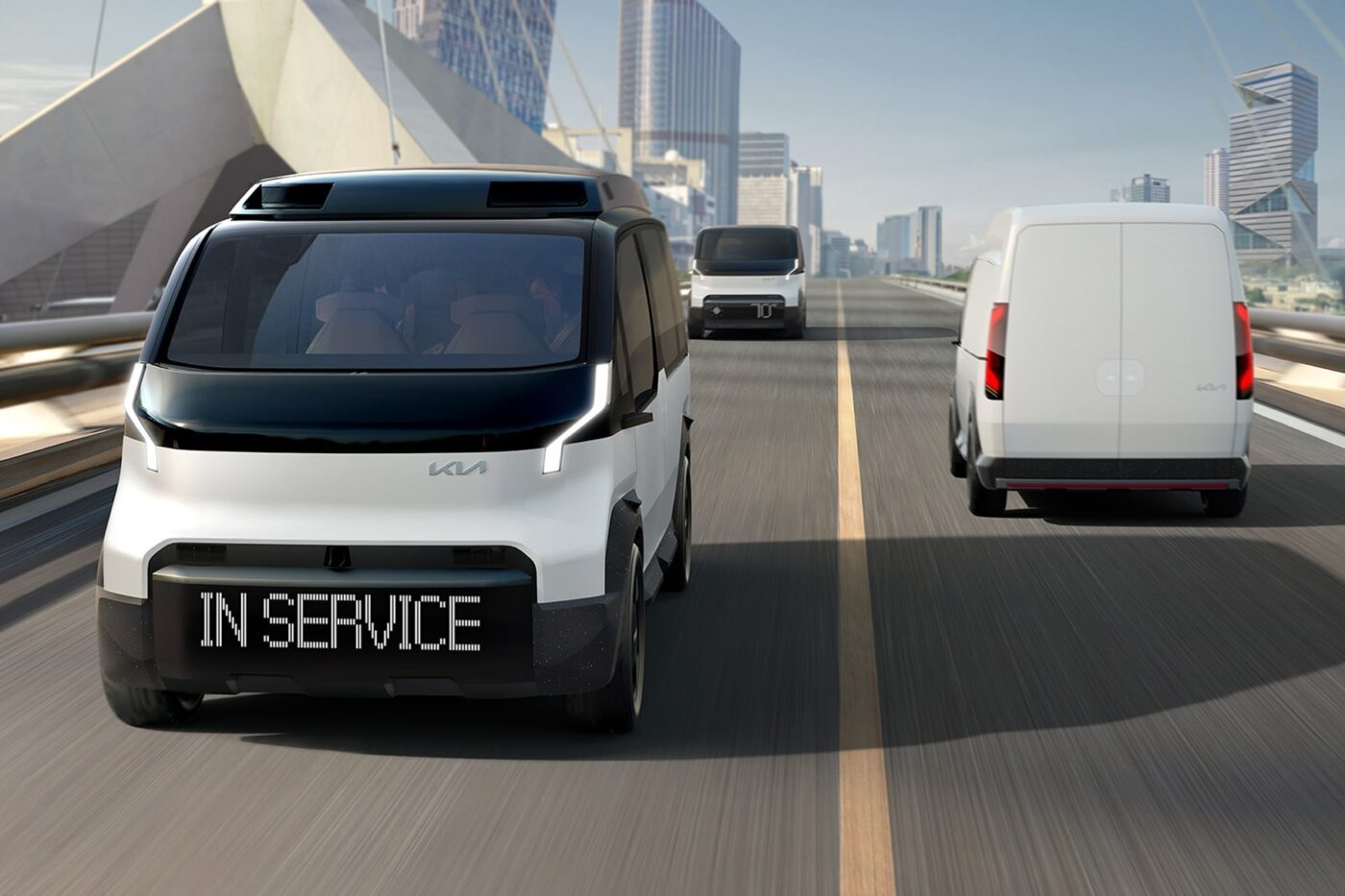
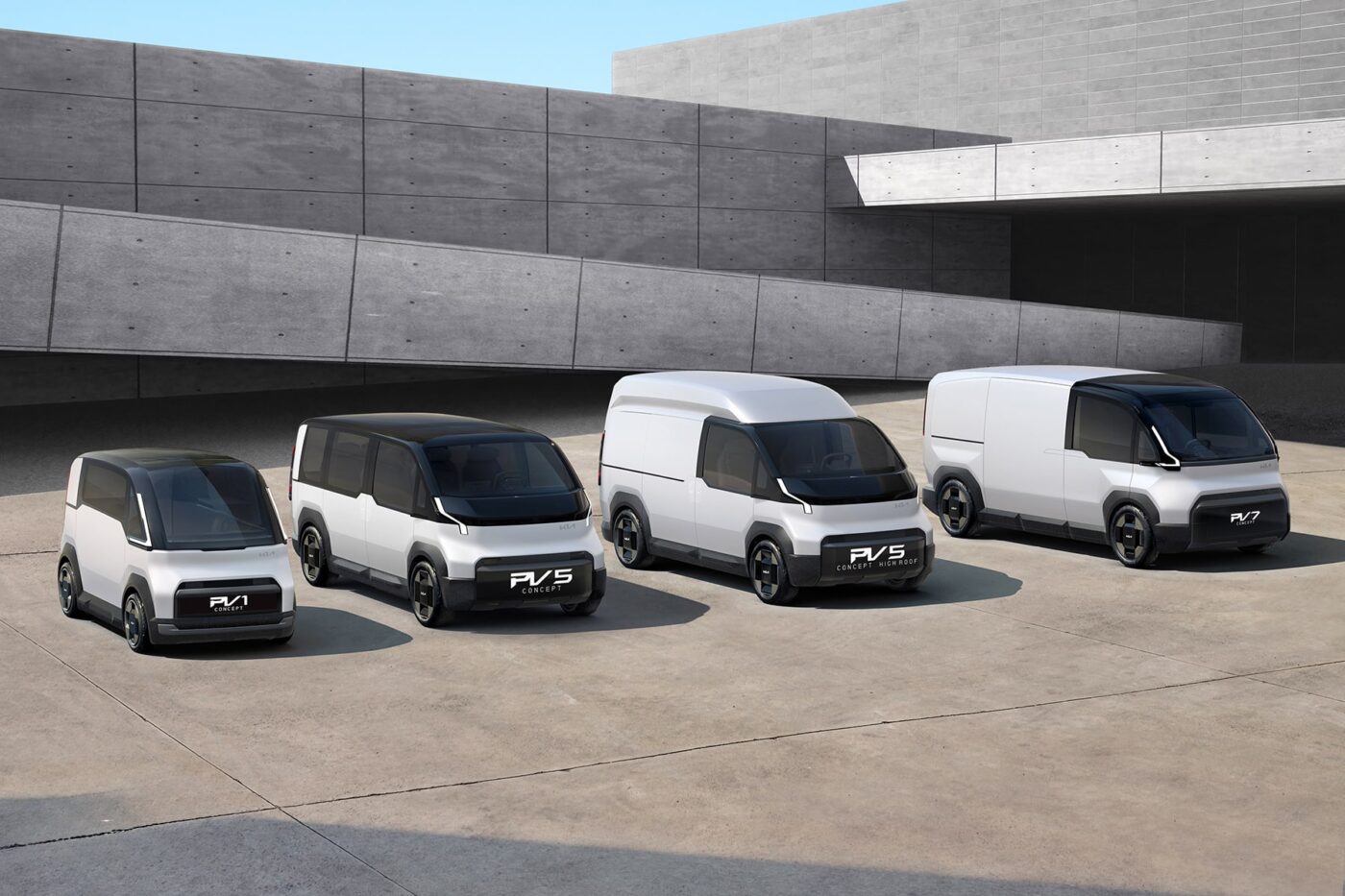
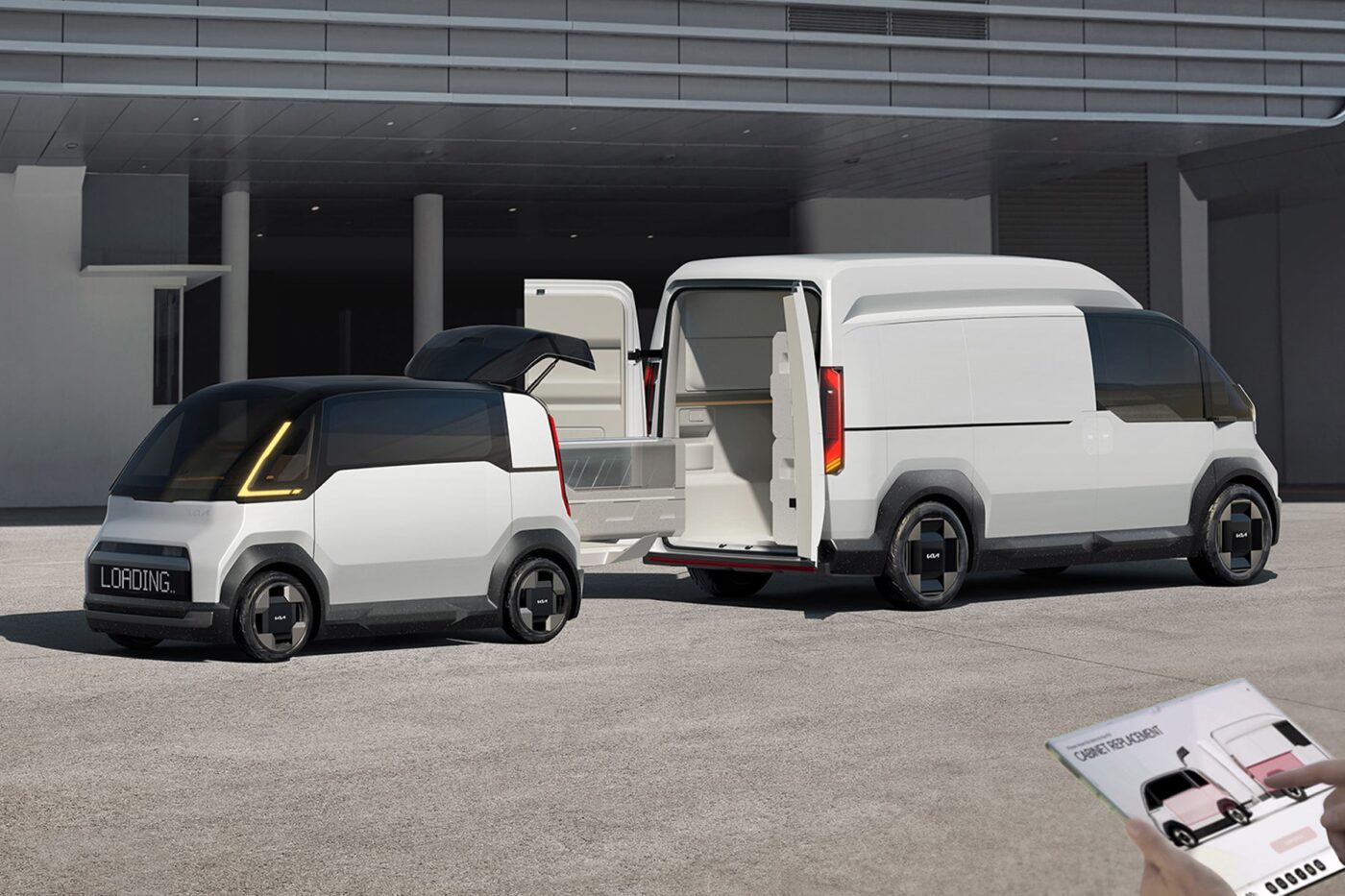
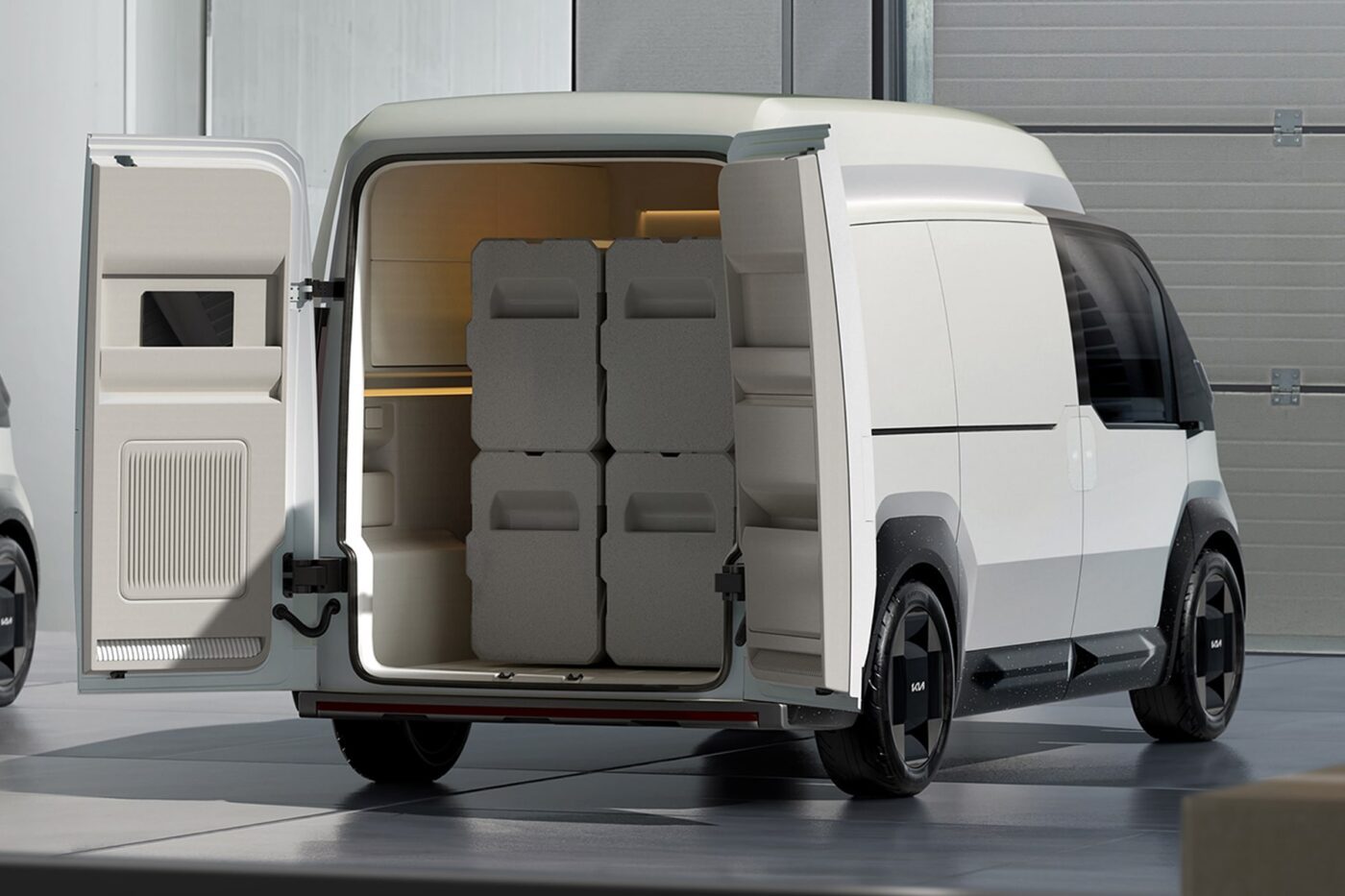
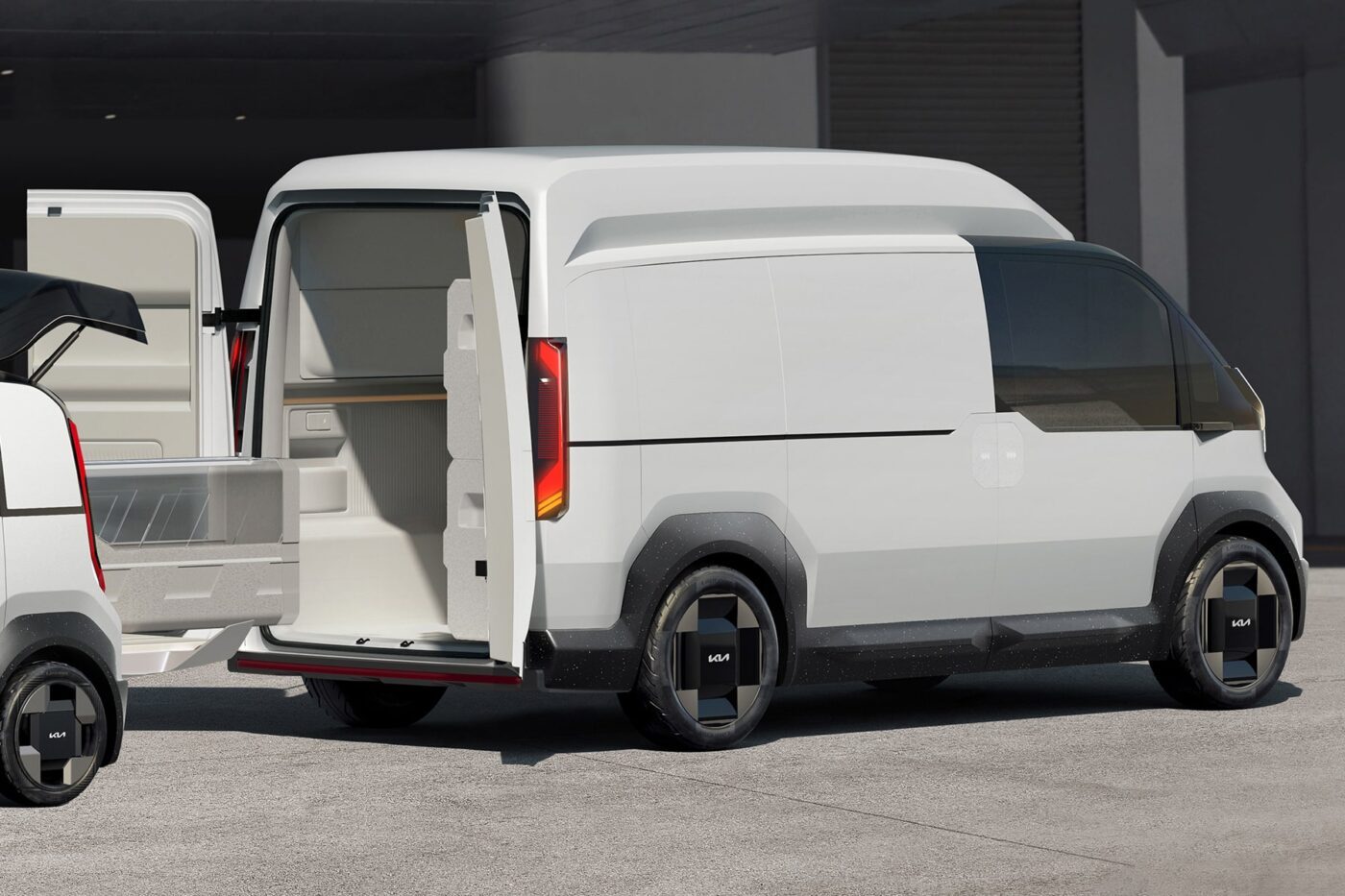
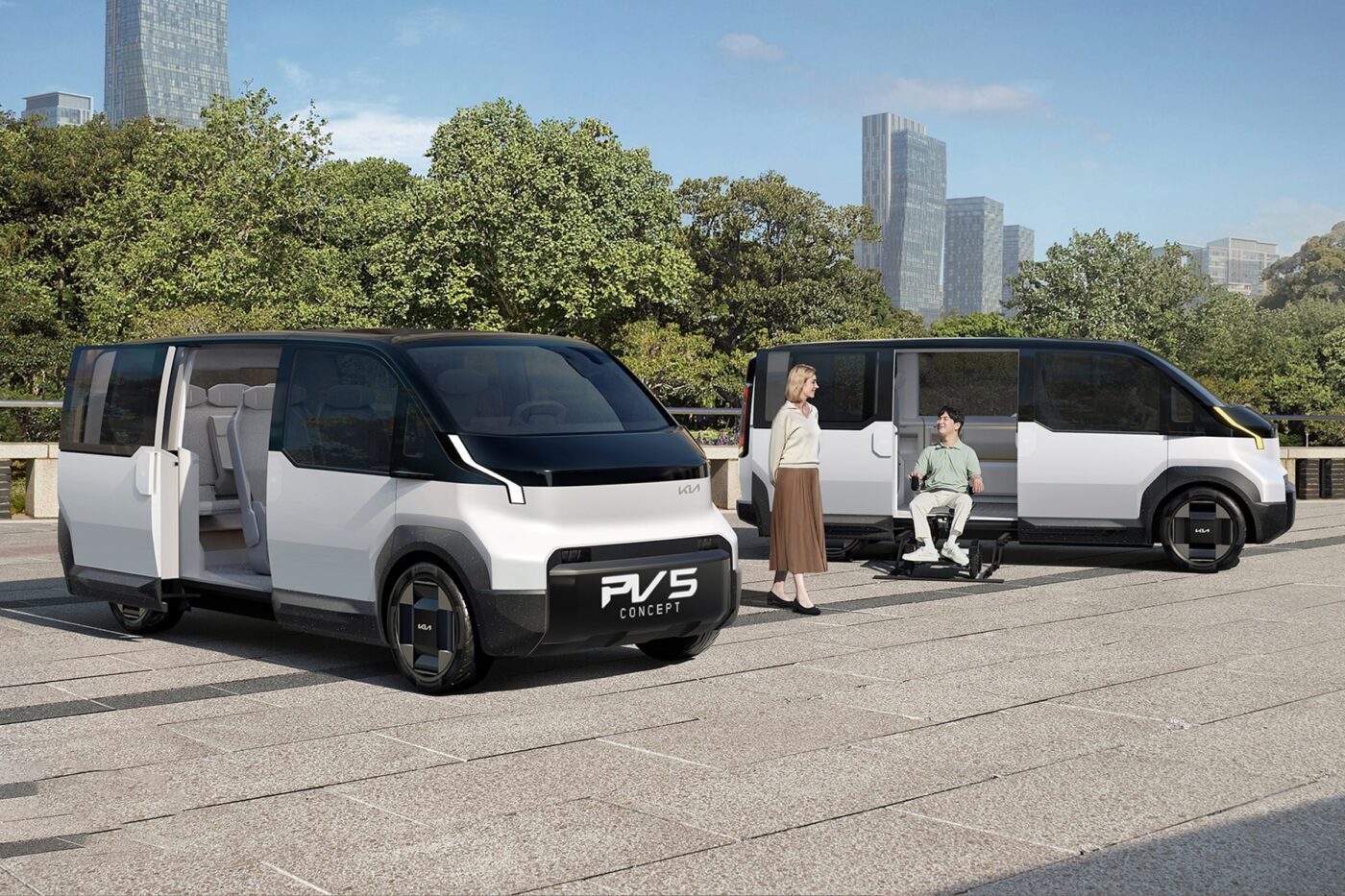
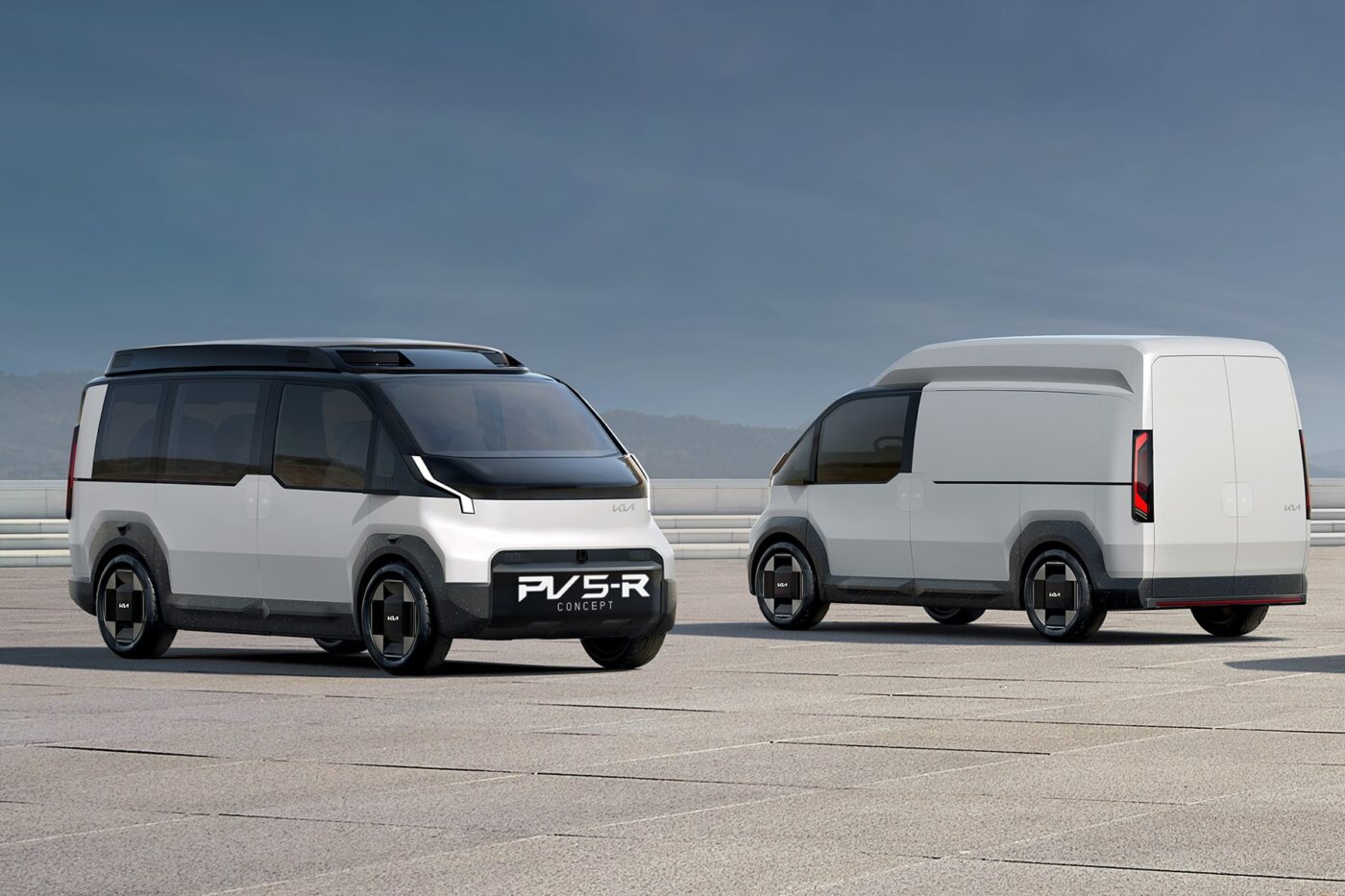
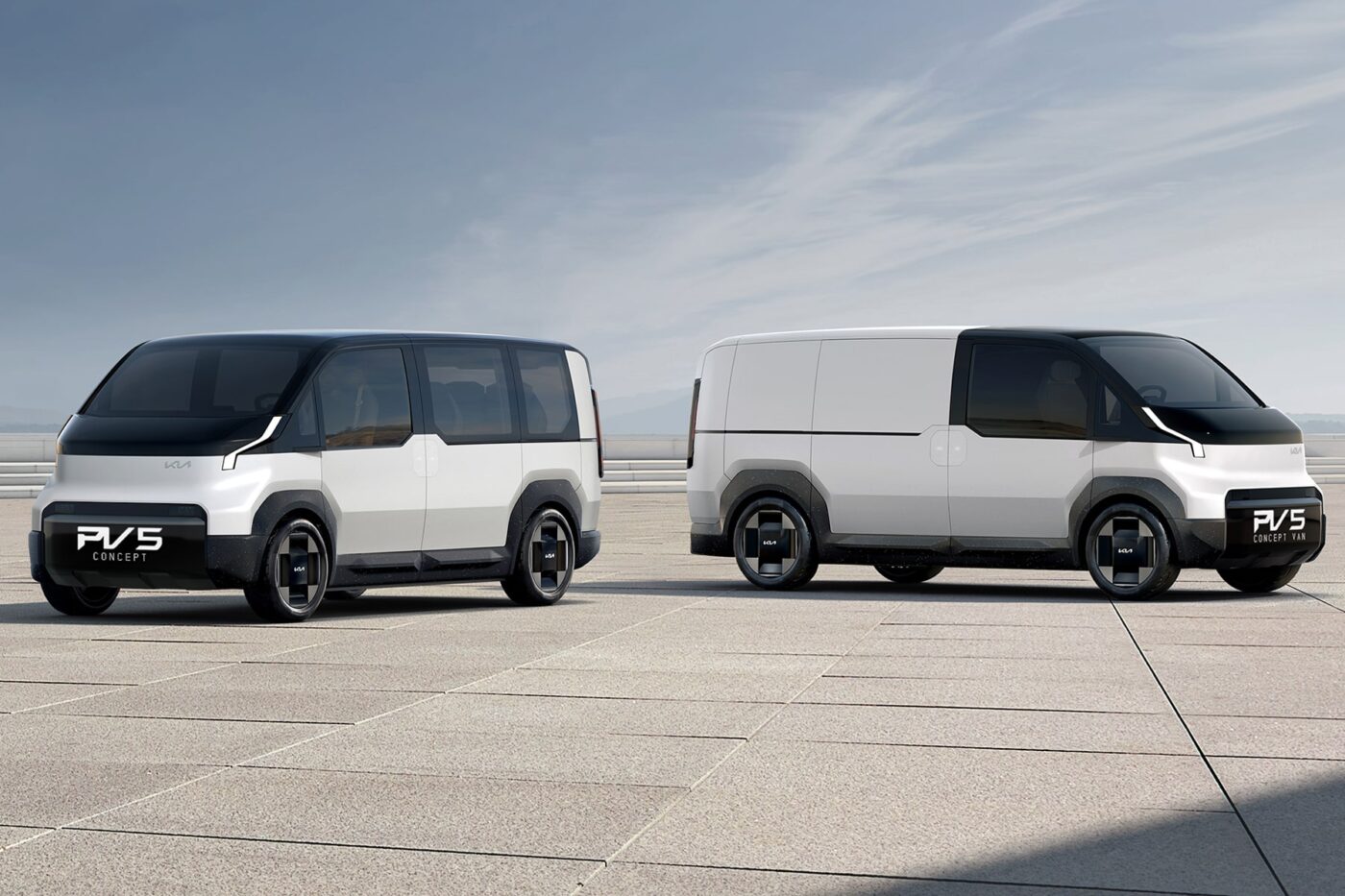
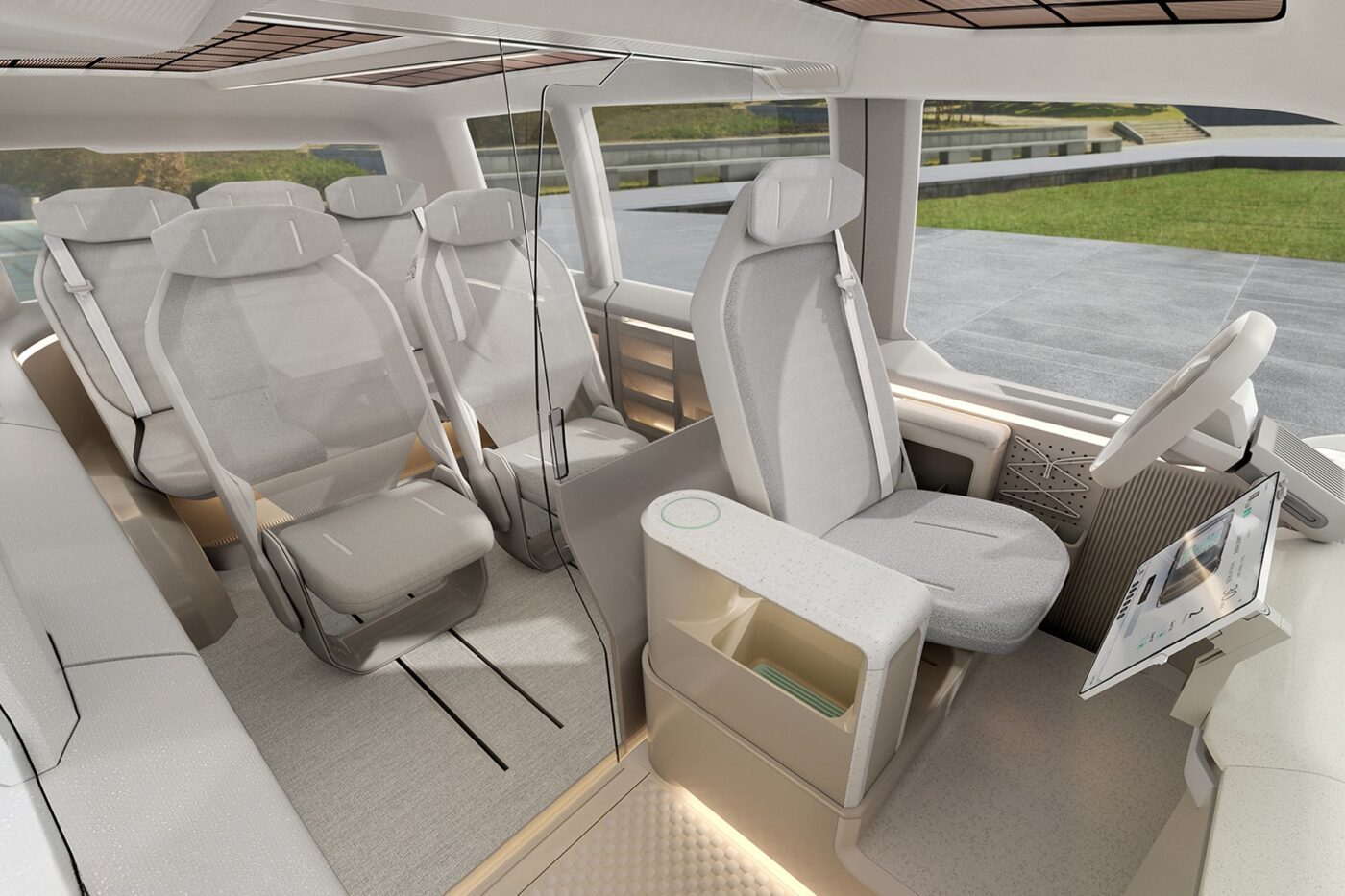
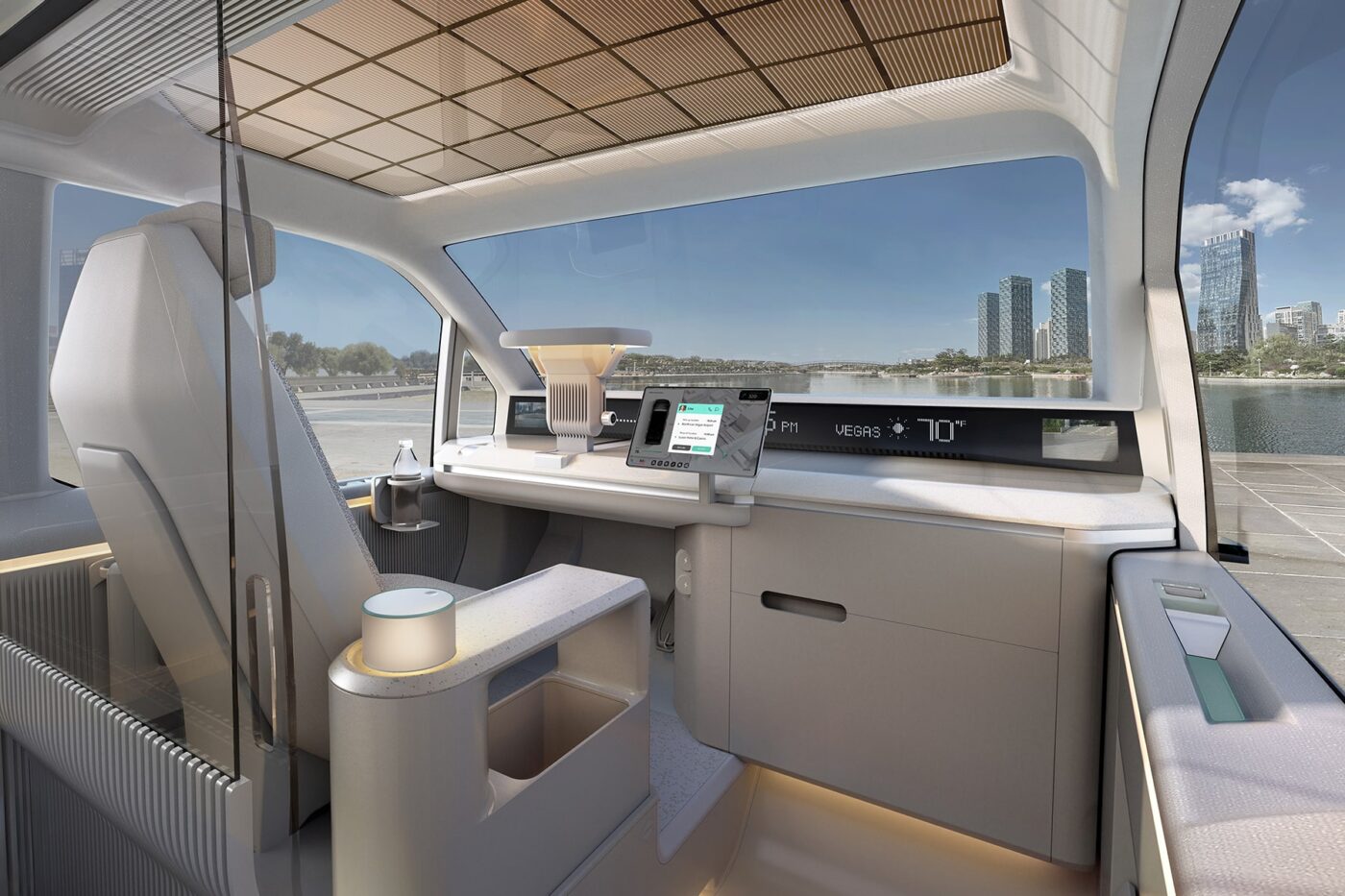
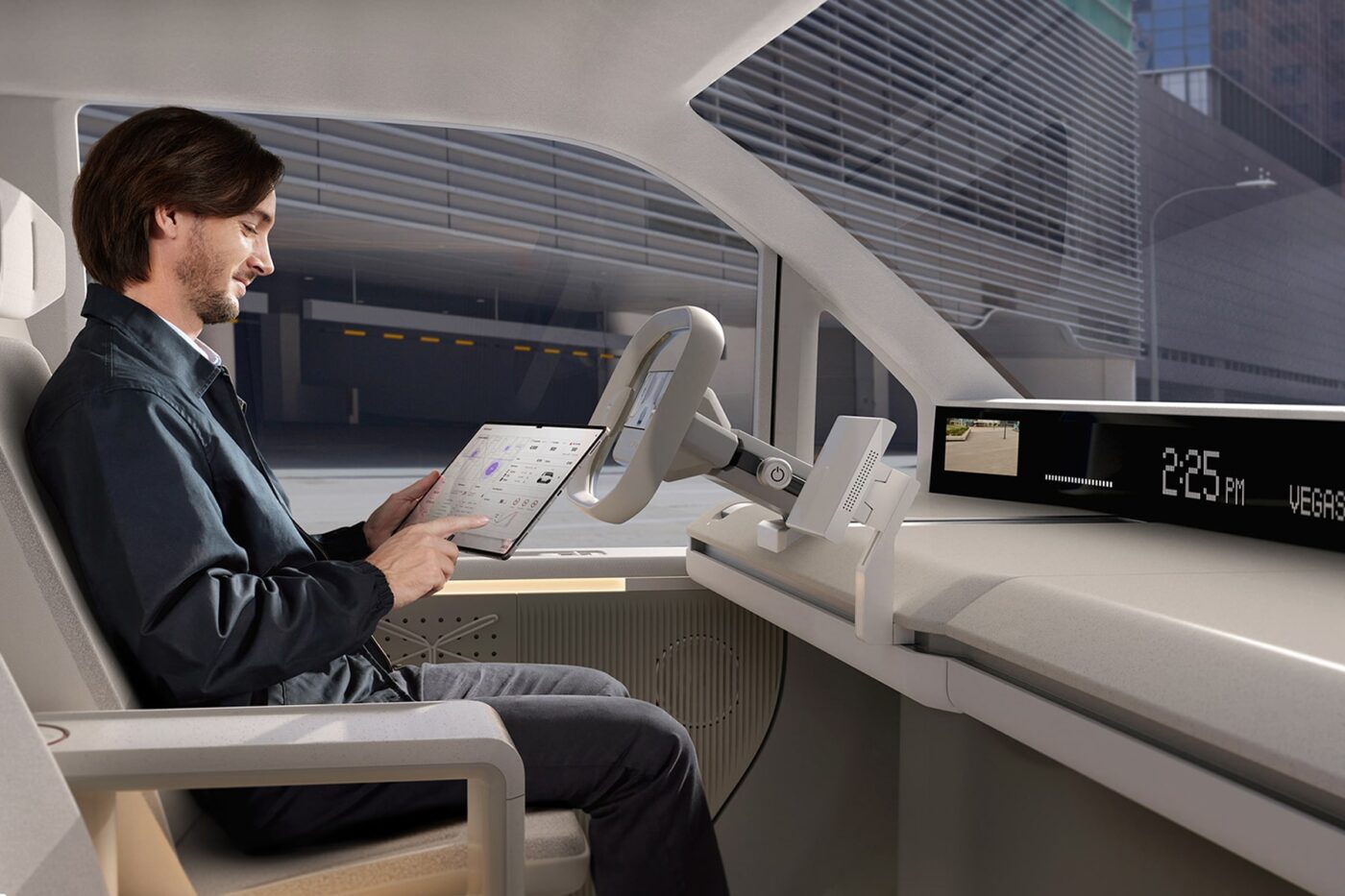
Modularisation is also made possible by weldless body structure assembly called “Dynamic Hybrid,” which allows the length of the moving elements to be flexibly adjusted depending on the vehicle’s intended use. “Comprised of high-strength tubular steel and engineered polymers, typical parts are reduced by 55 per cent with no loss in rigidity,” Kia says. The Dynamic Hybrid technology is supplied as a standardised kit, enabling a Kia PV5 to be converted quickly and easily in the field.
Kia otherwise cites large doors with a pillarless opening, an extended wheelbase for a comparatively large, flat interior and a retractable steering wheel for an “office-like environment” in the cockpit as features of the vehicles. Operation is said to be simple and intuitive, and the vehicle is designed to be robust and solid. Kia also mentions the extensive use of sustainable materials such as bioplastic, PCM (post-consumer material) plastic, organic paint, recycled PET fabric, felt and yarns, and bio-PU foam, which should create “new aesthetic values.”
According to Kia, the PBV roadmap will be divided into three phases. The first phase will see the launch of the Kia PV5 in 2025, which the manufacturer wants to position as a versatile electric vehicle for applications such as on-call taxis, delivery services and utility companies. “Enhanced data connectivity between vehicles and external data such as route or delivery information will enable convenient operation of multiple vehicles as a software-defined fleet,” the carmaker adds. The PV5 will initially launch as a basic, van, high-roof and chassis cab version. A robotaxi model is also planned for a later date. It will be developed in collaboration with Motional (a joint venture between HMG and Aptiv) and offer passengers an autonomous driving experience.
In phase two, which Kia does not specify in terms of timing, “symbiosis of the PBV ecosystem will be complimented by two further models, the ‘PV7’ and ‘PV1’, utilising cabinet and frame systems to enhance interaction and connectivity among vehicles based on the modular concept,” Kia writes. In the meantime, it will develop new forms of business linked to robotics and other future technologies.
The PV7 is the largest model in the range and will be characterised by a larger interior, greater range and improved functions. Similarly, the PV1 is the smallest product and will be particularly suitable for short-range manoeuvrable logistics transport.
In the third phase, Kia wants to develop its PBVs into “highly customisable, bespoke mobility solutions by integrating with the future mobility ecosystem.” The keywords mentioned are “connected self-driving vehicles,” “smart cities”, and “hyper-connected world.”
“Kia’s PBV business represents our vision of going beyond the traditional concept of automobiles by fulfilling the unmet needs of diverse customers and communities through optimised vehicles and services catering to specific market and business circumstances,” says Ho Sung Song, President and CEO of Kia. “Kia PBVs will be an enabler of business innovation thanks to our customer-centric management system, EV mass production expertise, and the Hyundai Motor Group’s rapidly developing SDx strategy and related future businesses. We are excited to show that we are fully prepared to become the first mover in the global PBV market.”
Pierre-Martin Bos, Vice President and BDM Director of Kia PBV Business Division, describes the PBV business as “the pinnacle of our customer-centric business approach,” adding that “with the aim of developing PBVs and solutions tailored to their business environments, we are confident that these strong partnerships will be a driving force on the road to becoming a sustainable mobility solutions provider.”




0 Comments